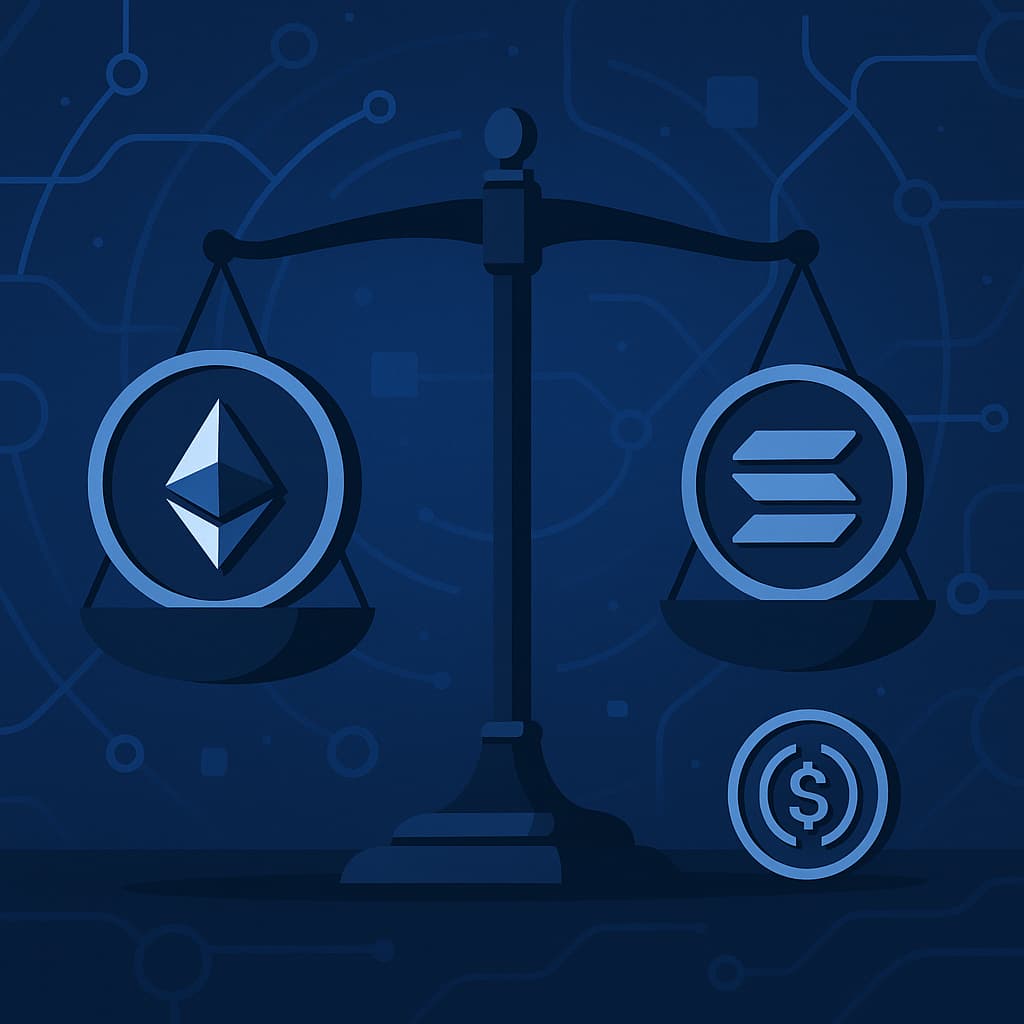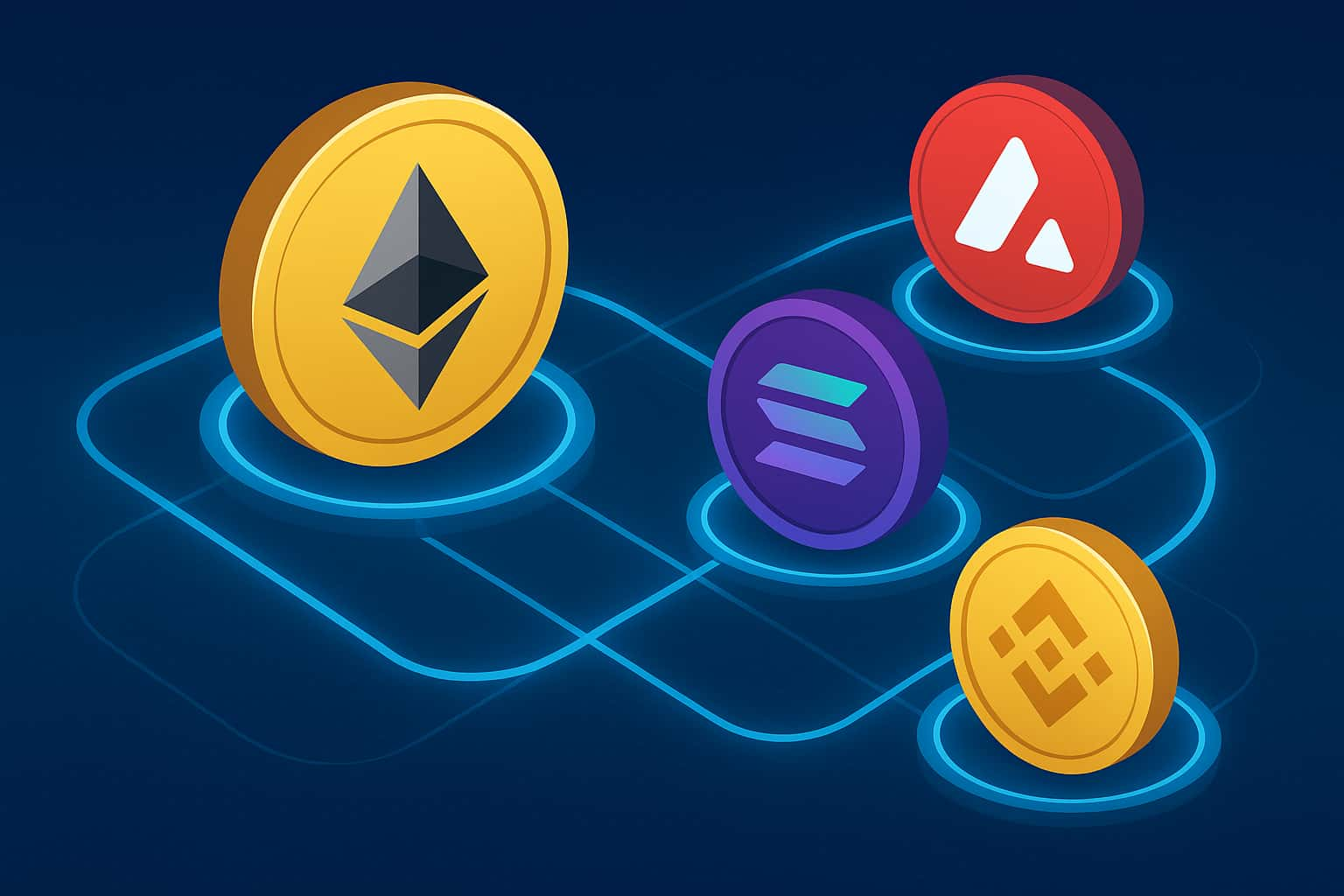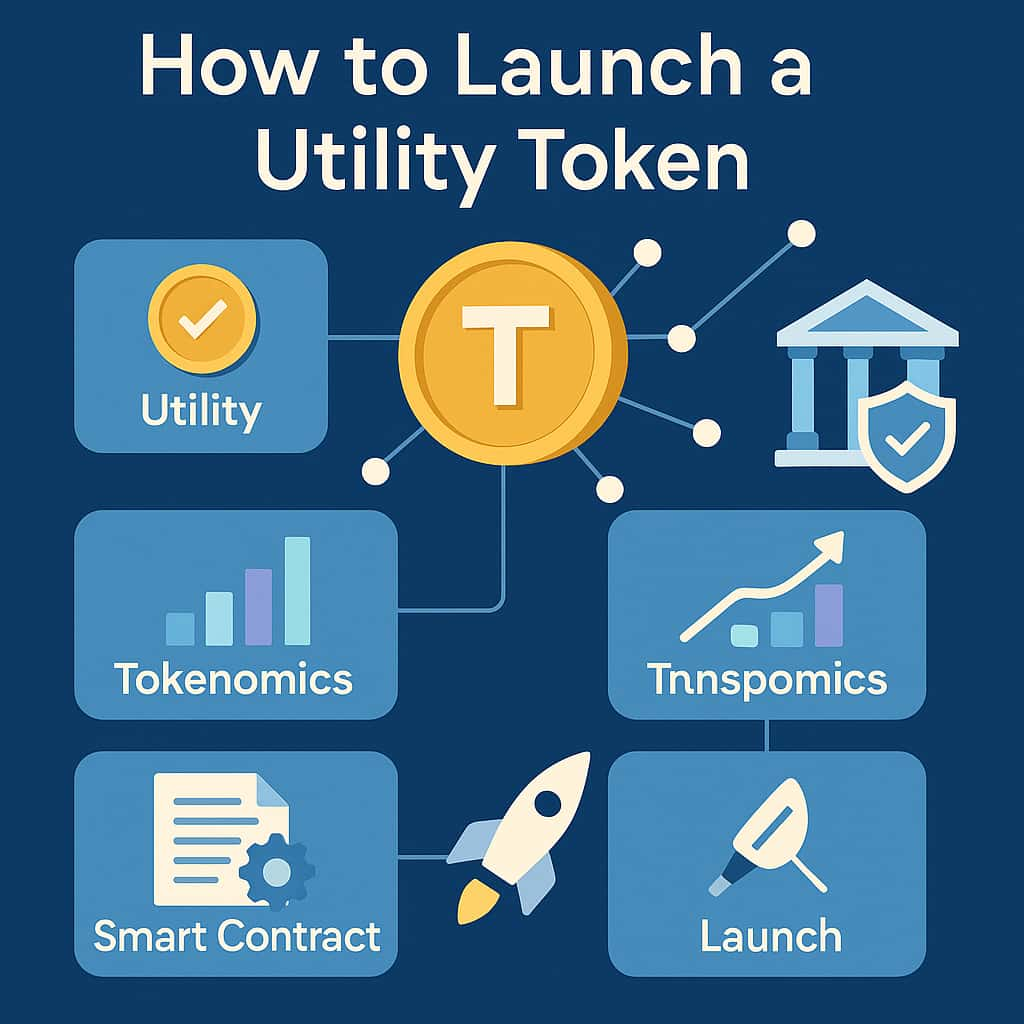-
If you're building a Web3 product, one decision quietly determines how far and how fast your platform can grow: should you introduce your own cryptocurrency, or should you rely on proven, liquid tokens like ETH, SOL, or USDC? On the surface, it looks like a technical question. In reality, it defines your economic model, user journey, compliance footprint, and the long‑term trust your platform can earn.
Most founders assume a custom token is part of the Web3 playbook. But in practice, the strongest teams choose tokenization only when it actually strengthens product value, not because it's trendy. This guide is designed to help you think the same way, through a practical and business‑first lens.
If you're exploring whether your Web3 product should run on a native token or rely on existing assets, it helps to understand how real-world token creation actually works. You can see the full breakdown of our approach on our crypto token development company page, where we explain how custom tokens are planned, designed, audited, and deployed for production-grade Web3 platforms.
Why This Decision Matters More Than You Think
For a Web3 founder or product lead, this decision sets the tone for your entire ecosystem. A token influences how value flows, how your users behave, how ownership is shared, and how resilient your model becomes as you scale.
A token choice impacts:
- User trust - whether people feel safe interacting with your system
- Liquidity and accessibility - how easy it is for users to enter and exit your ecosystem
- Compliance - whether your model triggers regulatory scrutiny
- Ecosystem incentives - how you reward the behavior that matters
- Long‑term sustainability - whether your economic engine can outlive market hype
In a maturing crypto landscape, where real usage and sustainability matter more than token pumps, the right token strategy is not cosmetic - it's core infrastructure. Founders who get this right build ecosystems that grow organically. Founders who get it wrong often end up managing confusion, legal concerns, or misaligned incentives.
This guide helps you choose with clarity, not assumptions.
If you want a broader understanding of how digital assets fit into real product ecosystems, have a look at The Ultimate Guide to Cryptocurrency Development for Businesses. It complements the thinking here and gives you a practical view of the full crypto development lifecycle.
When Using Existing Tokens Makes More Sense
Not every platform needs a custom cryptocurrency. In fact, many early‑stage products grow faster by leveraging established tokens like ETH, SOL, or USDC.
1. You only need payments, fees, or collateral
If your platform simply needs a reliable medium for:
- Payments
- Transaction fees
- Deposits or collateral
- Simple value transfer
…then existing tokens already give you everything you need.
Best fits:
- USDC for stable pricing and predictable UX
- ETH/SOL for on‑chain payments that align with network gas
This helps you avoid unnecessary complexity while keeping your product focused.
2. You want the lowest friction for new users
Users already understand ETH, SOL, and USDC. They don't need to learn a new token or wonder whether it's trustworthy. For mainstream or early audiences, removing friction is more valuable than introducing novelty.
3. You want to minimize regulatory exposure
A custom token often triggers questions around:
- Utility vs security classification
- Fair launch and token distribution
- Secondary‑market risks
Using established tokens keeps your product on the safer side of compliance.
4. You want to move fast and validate your idea
Issuing a custom token requires:
- Tokenomics modeling
- Smart contract development
- Independent audits
- Liquidity planning
- Investor and community communication
If your goal is to ship quickly and prove market fit, existing tokens help you move without bottlenecks.
When this path works best
You'll benefit from using existing tokens when building:
- Payment rails
- Marketplaces validating early traction
- dApps that don't rely on incentives or governance
- MVPs designed for speed and iteration
It keeps your foundation strong while reducing overhead.
Also Read | The True Cost of Launching a Cryptocurrency in 2026
When Creating a Custom Cryptocurrency Is the Better Move
A custom cryptocurrency is not just a branding exercise - it's a tool to shape your ecosystem's economic logic. When needed, it unlocks control that no existing token can match.
1. Your app needs unique token behavior
If your platform's core engine runs on:
- Staking and yield mechanics
- Advanced reward structures
- Tiered user privileges
- On‑chain voting and governance
- Inflation/deflation controls
…then a custom token gives you the flexibility to design economics that reflect your exact product needs.
2. You want strong community ownership
A native token can transform your users from passive participants into true stakeholders. This strengthens:
- Retention loops
- Community involvement
- Ecosystem loyalty
- Shared ownership mentality
When your product thrives on a passionate user base, a custom token can reinforce that bond.
3. You plan to build a decentralized governance model
If your roadmap includes DAOs or user‑driven decision‑making, a native token becomes essential. It defines:
- Voting rights
- Delegation rules
- Proposal governance
4. The token is a core revenue driver
In some products, especially in DeFi, gaming, and side‑chain environments, the token is not simply a utility tool. It is the economic engine of the platform.
5. You want absolute control over economic design
A custom token lets you define:
- Total supply
- Vesting schedules
- Emission curves
- Lockup mechanics
- Burn rules
- Reward modeling
This is powerful, but it requires strong tokenomics discipline.
Where this choice works well
A custom cryptocurrency is ideal for:
- DeFi protocols seeking liquidity and governance
- Game economies needing custom incentives
- Loyalty or membership ecosystems
- DAO‑driven platforms
- Layer‑2 or app‑chain environments
It offers the highest upside, but only if designed with care.
You might also like | Utility Token Development Guide for Founders
A Simple Framework to Decide
When you're deep in product development, token strategy can feel abstract. This expanded framework turns the decision into something practical, grounded in real usage, economic logic, and the realities of scaling a Web3 product.
1. Does your platform require flexible or custom economic behavior?
Start by mapping how value flows inside your product. Tokens are economic tools, so the question is: do you need custom economics, or will simple value transfer do the job?
Ask:
- Do you rely on incentives to guide user behavior?
- Would staking or locking improve long‑term engagement?
- Is governance part of your roadmap, even if not today?
- Will your ecosystem need tiering, points, or differential access?
- Are reward loops central to your retention strategy?
If these functions sit at the heart of your product, existing tokens limit you. A custom cryptocurrency gives you complete control over economic behavior.
If payments and deposits are all you need, existing tokens are more efficient.
2. Will your audience comfortably adopt a new token?
This comes down to user psychology. Crypto‑native users are comfortable with new tokens; mainstream audiences are not.
Think through:
- How experienced are your first 1,000 users?
- Will a new token increase onboarding friction?
- Will users question the token's legitimacy or necessity?
- Does a new token make the product feel like a paywall?
If your early audience is skeptical or new to Web3, pushing a token too early can hurt growth. Familiar tokens reduce friction.
3. Do you have the resources to support a token long‑term?
A custom token is not a launch event, it's a long‑term operational commitment.
You'll need to support:
- Liquidity pools and market‑making
- Tokenholder communication and community ops
- Transparent reporting of supply, emissions, burns
- Governance tooling and processes
- Security practices, audits, upgradeability
- Treasury management and vesting oversight
If you're not ready to run a mini‑economy, use existing tokens first. Launching without long‑term support leads to token decay, user frustration, and reputational damage.
4. What is your acceptable regulatory risk level?
Regulation impacts everything: token design, distribution, liquidity, communication, and compliance.
Evaluate:
- Could your token be interpreted as an investment?
- Can you clearly show utility and avoid implicit promises?
- Will distributing tokens open jurisdiction‑specific obligations?
- Do you have legal counsel capable of navigating crypto regulations?
If the answer is no, starting with established tokens keeps you on safer ground.
5. Is the token essential to your model, or just optional?
This is where many founders go wrong. They create a token because they feel they should, not because the product truly benefits.
Your token is essential if:
- It unlocks core functionality (governance, staking, rewards)
- It aligns incentives between users, creators, validators, or partners
- It powers a self‑contained economy (games, memberships, loyalty)
- It strengthens your network effects via shared ownership
Your token is optional if:
- The product works perfectly without it
- You're adding it for hype or fundraising
- Utility is unclear or forced
- You can't explain the token's value in a single sentence
If a token doesn't add measurable value, it distracts more than it helps.
6. Timing check: Should you decide now or later?
Token decisions don't have to be binary or final.
The strongest teams:
- Launch with existing tokens
- Observe real user behavior
- Identify incentive gaps
- Introduce a custom token only when it serves proven needs
This ensures the token fits the product, not the other way around.
In short
This framework grounds your decision in economics, user behavior, operational capacity, and regulatory reality, the four factors that predict whether your token will support your growth or undermine it.
Real‑World Patterns‑World Patterns From Successful Projects
Teams that relied on existing tokens and succeeded:
- Wallet providers like Phantom
- Payment solutions using USDC
- Lightweight DeFi dashboards (example: Zapper)
They focused on product UX, liquidity access, and frictionless onboarding before expanding into tokenized models.
Teams that launched custom tokens effectively:
- Aave (AAVE governance and staking)
- Curve Finance (CRV incentives and veToken model)
- Axie Infinity (in‑game economy with AXS & SLP)
- Binance (BNB powering an entire ecosystem)
These projects launched tokens only when the utility, timing, and ecosystem maturity were aligned.
A Hybrid Strategy: Start With Existing Tokens, Add Custom Later
This approach has quietly become the most reliable path for founders who want both speed and long‑term stability. Instead of locking yourself into a token decision too early, you use what already works, then evolve into a custom model only when the data proves it's needed. This is how the strongest Web3 products avoid wasted engineering, avoid regulatory complexity, and build tokens that actually succeed.
Phase 1: Build with existing tokens
The goal in this phase is simple: ship fast, validate assumptions, and keep friction as low as possible. Existing tokens let you do that without asking users to buy something new or trust a token they don't understand.
You gain:
- Speed - you skip audits, tokenomics, vesting logic, liquidity planning, and launch overhead.
- User trust - users already hold and trust ETH, SOL, and USDC. Familiar assets reduce hesitation.
- Simpler compliance - no regulatory concerns around issuance or token classification.
- A cleaner MVP - you focus on usability, retention, and solving a real problem, not managing a token economy.
- Clear analytics - you get true product‑usage data rather than distorted metrics caused by speculative token behavior.
This phase helps you understand your real ecosystem needs instead of designing a token in a vacuum.
Phase 2: Introduce a custom token once patterns are clear
The biggest mistake early teams make is launching a token before they understand how users behave. Phase 2 fixes that. Only after you've studied user journeys, retention loops, and growth levers should you design your economic engine.
By the time you issue your token, you'll have:
- Real user behavior - you'll know what actions need incentivizing and which habits form naturally.
- Clear incentive needs - staking, governance, or tiered access won't be assumptions, they'll be validated.
- A mature product - your token launches into a stable environment, not an untested prototype.
- Stronger retention - you build incentives around patterns that already exist, amplifying what works.
- Higher credibility - partners, investors, and users trust tokens backed by real traction.
- No unnecessary complexity - the token exists with purpose, not as a marketing artifact.
When introduced at the right time, a custom token becomes a multiplier, not a distraction.
Why This Hybrid Model Works So Well
- User-first - it removes friction early and adds complexity only when it benefits the user.
- Founder-friendly - you conserve time, budget, and legal exposure.
- Investor-friendly - traction-first products signal discipline and sustainability.
- SEO-friendly - you position your product around clarity and proof, not premature token hype.
- Ecosystem-friendly - tokens built on validated behavior have higher adoption and lower volatility.
This model is how most successful Web3 platforms quietly operate, even if they don't say it publicly.
SEO Takeaways for Founders
This is the part most founders overlook, your token strategy isn't just a technical decision. It shapes how people search for you, what they expect from your platform, and whether your messaging aligns with what users actually want. In a market where credibility, clarity, and trust decide who wins, your token approach needs to reinforce your positioning, not compete with it.
These takeaways translate the entire decision into clear, search‑driven signals you can use for content, branding, and product communication.
1. Map your token decision to user intent
When people search for topics like “custom token vs existing token,” “utility token examples,” or “should I launch a crypto token,” they're looking for confidence, not hype. Your strategy should match that intent.
If your product works well with existing tokens, emphasize:
- Lower user friction
- Faster onboarding
- Stability and predictability
- Compliance‑friendly architecture
If your project truly needs a custom token, highlight:
- Strong utility
- Clear economic design
- Governance value
- Community alignment
This ensures your messaging matches what founders, investors, and users expect when they land on your site.
2. Anchor your decision in real value, not token hype
From an SEO standpoint, Google rewards content that demonstrates:
- Clear reasoning
- Real‑world examples
- Operational depth
- Long‑term thinking over hype cycles
A token choice grounded in product value signals credibility to both Google and your audience.
3. Communicate the 'why' behind your token strategy
Search behavior proves this: users don't just look for how to create a token, they want to understand why it matters.
If you launch a custom token, your public narrative should answer:
- Why does the token exist?
- What user problem does it solve?
- How does it improve the product experience?
- What long‑term role will it play?
If you're using existing tokens, your story should reinforce:
- Reliability of proven assets
- Reduced regulatory risk
- User‑first simplicity
- A focus on product utility over speculation
This clarity builds authority and reduces skepticism.
4. Think long‑term about discoverability and trust
Your token model influences:
- How investors perceive your product
- How developers evaluate your ecosystem
- How users compare you to competitors
Google now ranks content based on real expertise and operational understanding. When your token choice aligns with practical reasoning and transparent economics, your brand appears more trustworthy.
5. Align your token approach with product stage
Search patterns show that early‑stage founders look for simplicity, while scaling teams search for governance, incentives, and ecosystem design.
Using existing tokens maps cleanly to early‑stage SEO:
- MVPs
- onboarding
- quick launch
- low friction
Custom tokens map to mature growth search terms:
- governance tokens
- staking mechanics
- tokenomics models
- decentralized economies
Positioning your content around the right stage helps you attract the right audience
Final Thoughts
The crypto ecosystem has evolved. Token creation is no longer a default. It's a strategic move that should reflect real product needs, real user behavior, and real long‑term value.
If your goal is clarity and sustainability, start simple: use existing tokens. If your product eventually demands deeper incentives or shared ownership, introduce a custom cryptocurrency, but do it with intention, timing, and a clear purpose.
If you're ready to explore how a custom token can support your product's economics, governance, or user incentives, our crypto token development services page walks you through the full process, from tokenomics design and smart contract engineering to 3rd party audits, compliance, and launch support.

Our Offices
INDIA
Emaar Digital Greens, Sector 61,
Gurugram, Haryana
122011.
Welldone Tech Park,
Sector 48, Sohna road,
Gurugram, Haryana
122018.












